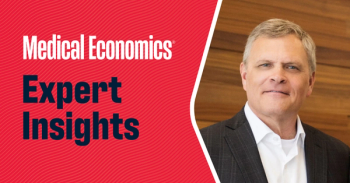
A guide to understanding loan repayment options for physicians
Large sums of graduate debt are a harsh reality of practicing medicine for the majority of new physicians.
Large sums of graduate debt are
Related:
With almost $200,000 in median debt, managing student loans in a smart manner can save you tens of thousands of dollars. The complex and changing variety of loan repayment programs presents
Loan forgiveness
There is a lot of debate about the program and whether or not it will last, but this information is accurate as of the writing of this article.
With the shift of many physicians from private practice to employed status for hospitals and other nonprofit organizations, there has been a rapid growth in the number of physicians who qualify for PSLF, at the same time that loan debt has exploded from tuition inflation that is twice the rate of inflation and three times the rate of physician salary increases.
Hot topic:
This increase in eligible jobs, along with the ability to make several years of small repayments in residency, has made this a very attractive proposition for new graduates and those that have a very large debt-to-income ratio.
Loan Repayment Plans
It is very important to remember that aggressively paying off your loans is the first and simplest way to get out of debt. Physicians have a very high debt burden but are still relatively well-positioned to dig themselves out of the situation with an average salary of $195,000 for primary care1 and $284,000 for specialists1.
Standard Repayment. This is a simple plan where your loan repayment is set at 10 years. The payment stays the same for the entire period. This option is good for people with relatively low student loans, and while the monthly payments are probably too high for most residents, they should be manageable as a practicing physician. This is a qualifying plan for PSLF, however, since PSLF takes ten years, the loan will be repaid in full.
Popular on our site:
Income-Driven Repayment Plans: This is not specifically a plan but rather an umbrella term that encompasses all of the plans where your monthly payment depends on your income instead of your loan amount. It is based on you having to pay a percentage of income each year until the loan is paid off or it is forgiven. Of note, discretionary income in these plans means income above 150% of the poverty line.
Income-Based Repayment (IBR). The first, and least restrictive, of the income driven plans. Your monthly payments are capped at 15% of discretionary income. The requirements are that your monthly loan payments constitute a “financial hardship,” which virtually all residents qualify for, but only attendings with very high loans will qualify. This plan allows you to only take your Adjusted Gross Income(AGI)into consideration if you are married and file taxes separately, which allows you to lower your payments by lowering your AGI. Finally, the maximum payment under IBR is capped at the standard repayment.
Pay As You Earn (PAYE). Similar to IBR, but only available for people who did not take loans out before 2007. It uses 10% of discretionary income rather than 15% of IBR, resulting in lower monthly payments. Like IBR, you can also separate your income from your spouse’s if you file taxes separately. Payment is also capped at the standard repayment amount. If not going for PSLF, forgiveness occurs after 20 years (although it is taxable, while PSLF is tax-free).
Revised Pay As You Earn (REPAYE). Identical to PAYE with for four key changes. You cannot separate your income from your spouse, even if you file taxes separately. Unlike PAYE, everyone is eligible. Third, there is no cap on the maximum payment at the standard. Fourth, if your payments do not cover all of the accruing interest on your loans, the federal government will forgive half of the interest.
The fourth change is the best difference. If your income-based payments don’t cover all of the interest from the loans, the federal government will forgive half of the accruing interest2.
Related reading:
There are several other older plans, such as the extended, graduated and income contingent repayment, but they all come with a much longer pay-off periods and are not as advantageous when it comes to loan forgiveness.
Finally, in addition to the federal loan plans, there is the option to privately refinance student loans. There has been huge growth in the private refinancing industry, with many companies such as DRB, SOFI and Link Capital lining up to refinance loans for physicians. Often times, rates can be significantly lower than federal loans, however, they are dependent on individual credit and financial situations.
Pay-off strategies for different career paths
Here are two pay-off strategies for different career paths.
1. Employed or Academic physician. The most important thing is to get into one of the income-based plans as a resident to take advantage of low payments, and then continue working for a nonprofit institution. Take advantage of the interest subsidy and pay the minimum monthly payments while your income is low, then switch to IBR two months before you graduate and start working to take advantage of the capped maximum payment. Once you have made 120 payments, have the remainder of your loan balance forgiven.
Popular online:
2. Private practice or for-profit employee. Once you start residency, look at private refinancing. If the rate is better than what you would get with REPAYE, then refinance, if not enter REPAYE for the duration of residency. After you graduate, refinance privately with whoever will offer you the lowest interest rate and then aggressively pay your loans off with your attending salary.
Making the right moves as physicians is more important than ever as the loan burdens increase and the cost of mistakes rises.
References:
1. Peckham, C. (2015, April 21). Medscape 2015 Compensation Survey. Retrieved March 23, 2017, from http://www.medscape.com/features/slideshow/compensation/2015/public/overview
2. Income-Driven Repayment Plans: Questions and Answers. (2016, February 01). Retrieved March 23, 2017, from https://studentaid.ed.gov/sa/sites/default/files/income-driven-repayment-q-and-a.pdf
Newsletter
Stay informed and empowered with Medical Economics enewsletter, delivering expert insights, financial strategies, practice management tips and technology trends — tailored for today’s physicians.








